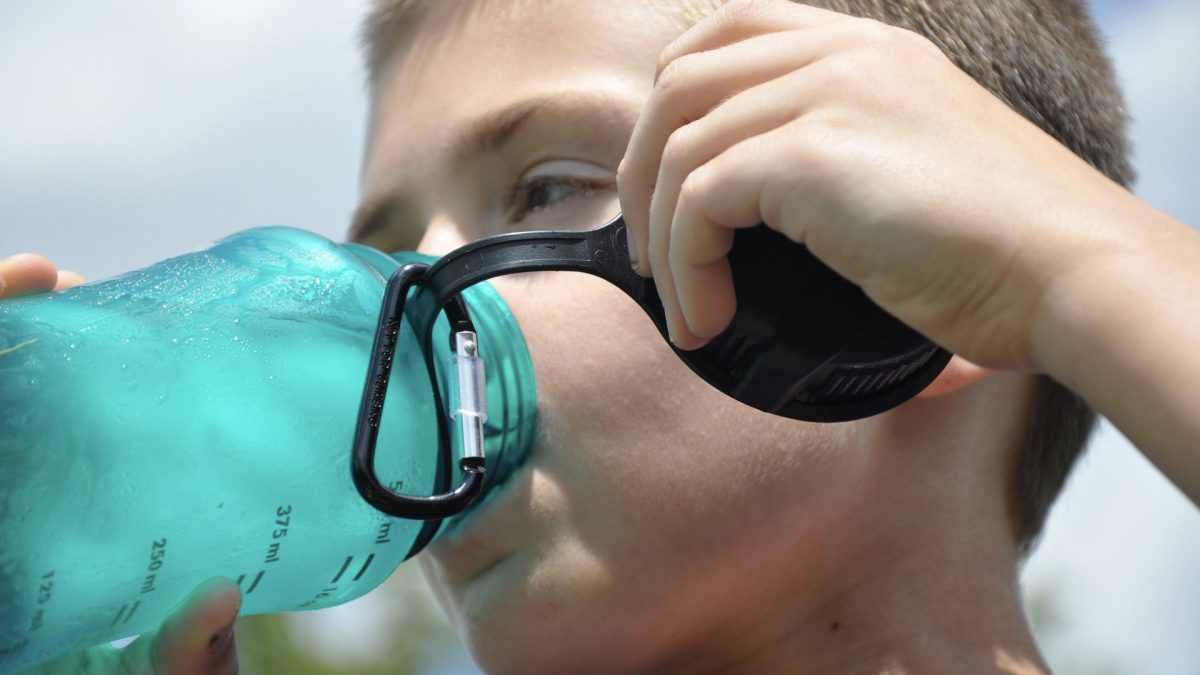
Image Credit: Gary G / Pixabay. This image has been modified.
Written By Michael Greger M.D. FACLM on July 2nd, 2020
Do BPA-free plastics such as Tritan, have human hormone-disrupting effects? And what about BPS and BPF?
Recent human studies indicate that exposure to the plastics chemical BPA may be associated with infertility, miscarriage, premature delivery, reduced male sexual function, polycystic ovaries, altered thyroid and immune function, diabetes, heart disease, and more. Yet, “[a]s recently as March 2012, FDA stated that low levels of BPA in food are considered safe.” However, just months later, to its credit, the agency banned the use of BPA plastics in baby bottles and sippy cups. Regulators standing up to industry? Maybe I shouldn’t be so cynical! But, wait. The ban was at the behest of the plastics industry. It had already stopped using BPA in baby bottles so it was their idea to ban it.
The industry had switched from BPA to similar compounds like BPF and BPS. So, our diets now contain everything from BPA to BPZ, and the majority of us have these new chemicals in our bodies as well. Are they any safer?
As I discuss in my video Are the BPA-Free Alternatives Safe?, based on the similarities of their chemical structures, they are all predicted to affect testosterone production and estrogen receptor activity, as you can see at 1:40 in my video. However, they were only recently put to the test.
As you can see at 1:50 in my video, we’ve known BPA significantly suppresses testosterone production, and, from “the first report describing BPS and BPF adverse effects on physiologic function in humans,” we know those compounds do, too. Well, kind of. The experiments were performed on the testicles of aborted human fetuses. But, the bottom line is that BPS and BPF seem to have “antiandrogenic anti-male hormone effects that are similar to those of BPA.” So when you’re assured you shouldn’t worry because your sales slip is BPA-free, the thermal paper may just contain BPS instead. What’s more, BPS receipts may contain up to 40 percent more BPS than they would have contained BPA. So BPA-free could be even worse. In fact, all BPA-replacement products tested to date released “chemicals having reliably detectable EA,” estrogenic activity.
This includes Tritan, which is specifically marketed as being estrogen-activity-free. As you can see at 3:06 in my video, however, researchers dripped an extract of Tritan on human breast cancer cells in a petri dish, and it accelerated their growth. This estrogenic effect was successfully abolished by an estrogen blocker, reinforcing it was an estrogen effect. Now, the accelerated growth of the cancer cells from the Tritan extract occurred after the plastic was exposed to the stressed state of simulated sunlight. Only one out of three Tritan products showed estrogen activity in an unstressed state, for instance when they weren’t exposed to microwaving, heat, or UV rays. “Because there would be no value in trading one health hazard for another, we should urgently focus on the human health risk assessment of BPA substitutes.”
In the meanwhile, there are steps we can take to limit our exposure. We can reduce our use of polycarbonate plastics, which are usually labeled with recycle codes three or seven, and we can opt for fresh and frozen foods over canned goods, especially when it comes to tuna and condensed soups. Canned fruit consumption doesn’t seem to matter, but weekly canned vegetable consumption has been associated with increased BPA exposure. If you do use plastics, don’t microwave them, put them in the dishwasher, leave them in the sun or a hot car, or use once they’re scratched. But using glass, ceramic, or stainless steel containers is probably best.
For more on BPA, check out my videos:
- Why BPA Hasn’t Been Banned?
- BPA on Receipts: Getting Under Our Skin
- Is Canned Fruit as Healthy?
- How to Avoid the Obesity-Related Plastic Chemical BPA
- BPA Plastic & Male Sexual Dysfunction
- Is Canned Fruit as Healthy?
Unfortunately, BPA isn’t the only plastics chemical that may have adverse health effects. See: